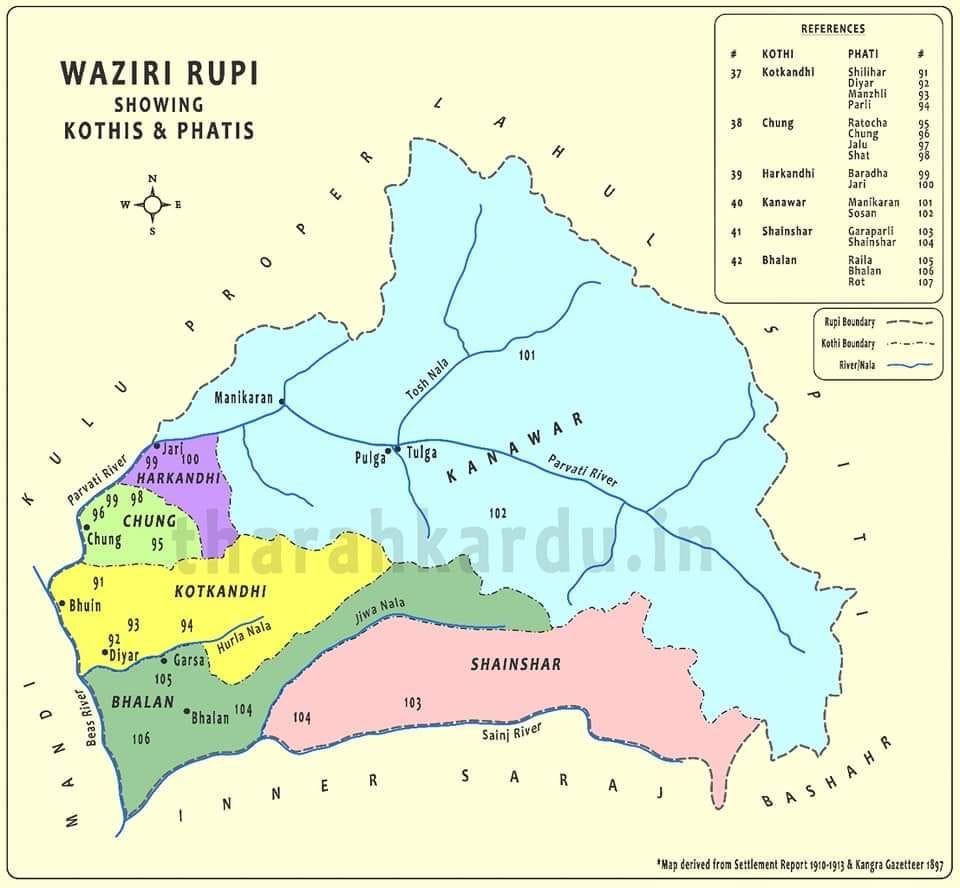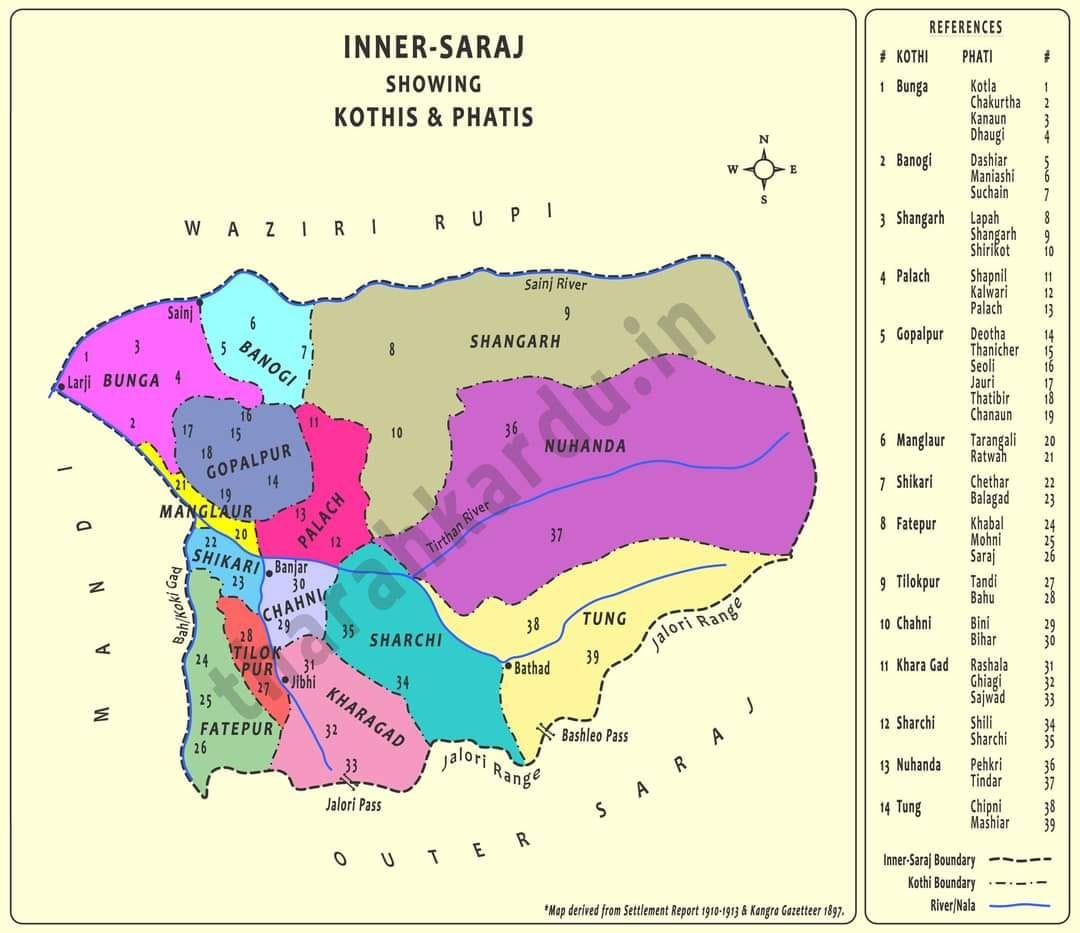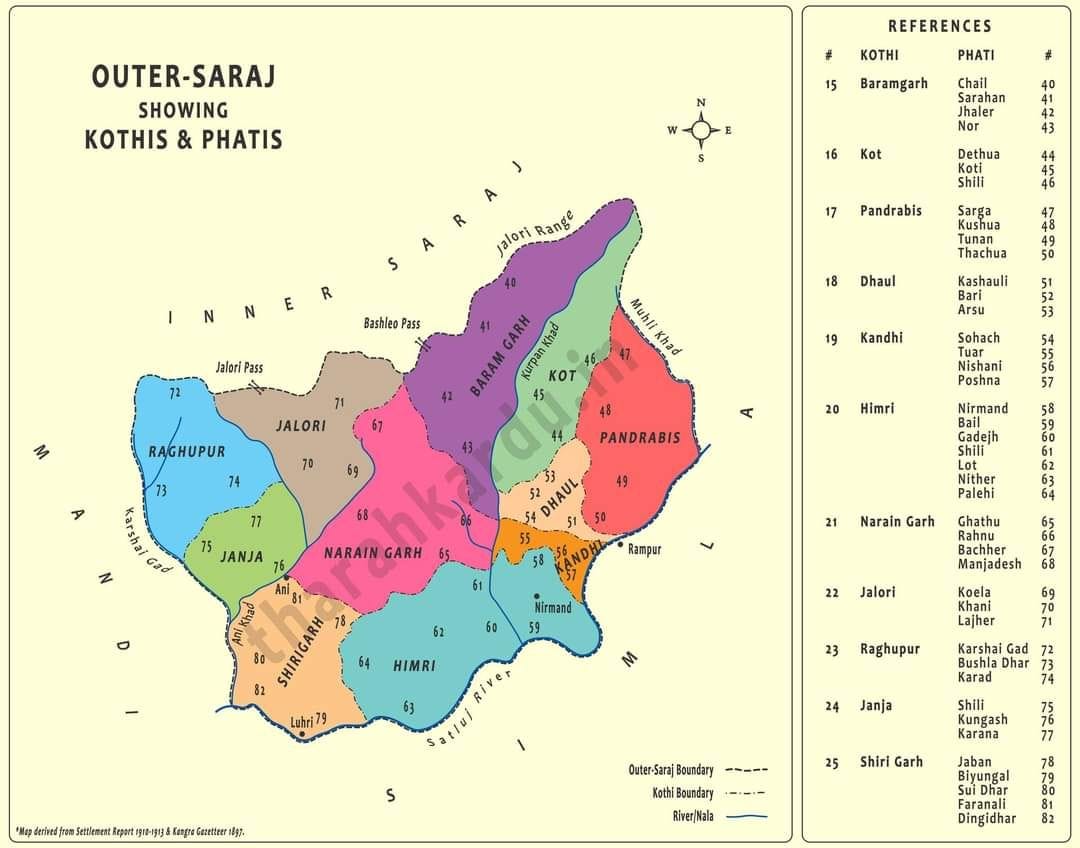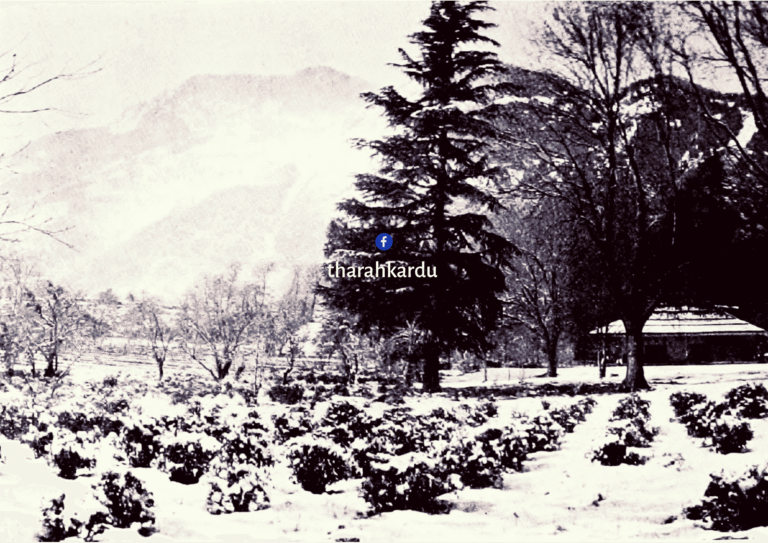The administration of Kullu in the times of Rajas was broken up into provinces called ‘waziris’. A ‘waziri’ was divided into ‘kothis’, each of which further had two to five subdivisions called ‘phatis’. Each ‘phati’ had, depending on the population density, up to twenty separate villages within it. The Waziris were governed by civil governors called Wazirs who answered to the Prime Minister (Chauntra Wazir) of the Raja. In addition, the ‘kothis’ in a Waziri employed a sizable staff of officials and subordinates, all of whom were appointed by the Raja himself. A full list of them is as follows:-
- A Palsara, in charge of the whole civil administration.
- A Kothiala, treasurer or store-keeper.
- A Panjauli who collected supplies for the royal kitchen, milk, curds, wood, etc.
- A Kaith, or accountant.
- A Zathali, or messenger and watchman.
- A Seok, who managed and distributed the ‘begar’, or forced labour. In Saraj this official was called a Bhatangaru.
Besides these there were the Negis, who were military commandants, but some of whom may, nevertheless, be ranked as village officials; for instance, the Negis who commanded the ‘misl’, or militia regiments of the ‘kothis’, and some of the Garhiya Negis who commanded particular hill forts or ‘garhs’.
The term ‘kothi’ was originally used for the granary or store-house in which the revenue in kind collected from a circuit of villages was stored; from meaning the granary, the term evolved to refer to the circuit of villages that supplied its contents.
The old feudal political framework was destroyed during the brief Sikh occupation (1840-46) of Kullu. And after the arrival of the British in 1846, the old system got modified and utilized by the British to assess and collect revenue.
The British gave each kothi, and the phatis within, a demarcated boundary—a phati earlier used to be more of a demographic division than a geographical division of a kothi’s land. They appointed a headman to each kothi giving him now the title of Negi. He was assisted by a staff of Lumberdars, assigned to each phati of the kothi, village watchmen called Kraunks, and forest watchmen called Rakhas.
A Negi was responsible for the revenue from his entire circuit, i.e., ‘kothi’ and was remunerated by a small percentage on the collections. It was also the Negi who superintended all the arrangements for begar, or forced labour. All demands for begar and supplies when required had to be furnished by each phati and were carried out by their respective Lumberdars.
This system of kothis and phatis continued post-Independence and even used at the present day, with some alterations, by the Revenue Department.
The seven traditional Waziris, or provinces, that constituted the erstwhile Kingdom of Kullu were as follows:
1. Waziri Parol, or Kulu proper: The Beas valley from Rotang in the north all the way down to the Phozal Nala, which falls into the Beas on its right bank at Duara, in the south; the entire left bank of Bead down to its confluence with Parvati at Bhuin. The whole Malana valley and the right side of the Parvati from its confluence with the Malana Nala all the way down to its confluence with the Beas.
2. Waziri Lag-Sari: It refers to the land on the right bank of the Beas that is located between the Phozal Nala in the north and the Sarvari Nala at Sultanpur in the south.
3. Waziri Lag-Maharaja: The region stretching from the right bank of the Sarvari Nala all the way down to where it meets the Beas at Kullu, as well as the territory stretching from the right bank of the Beas all the way down to Bajaura in the south.

4. Waziri Rupi: The land between the rivers Parvati and Sainj; the right bank of Parvati above its junction with Malana nala, except the Malana valley. The region got its name from the silver (rupa) mines of which it was renowned in the past.

5. Waziri Saraj: The southern part of Kulu that is located between the Sainj and the Satluj River, and divided into Inner and Outer Saraj by the Jalori range.


6. Waziri Mangahal: A portion of Chhota Mangahal.
7. Waziri Lahul: The southeastern portion of Lahul.



![The Jagir of Laug [Lag Valley]](https://tharahkardu.in/wp-content/uploads/2024/04/view-from-Tarapar-768x768.jpg)